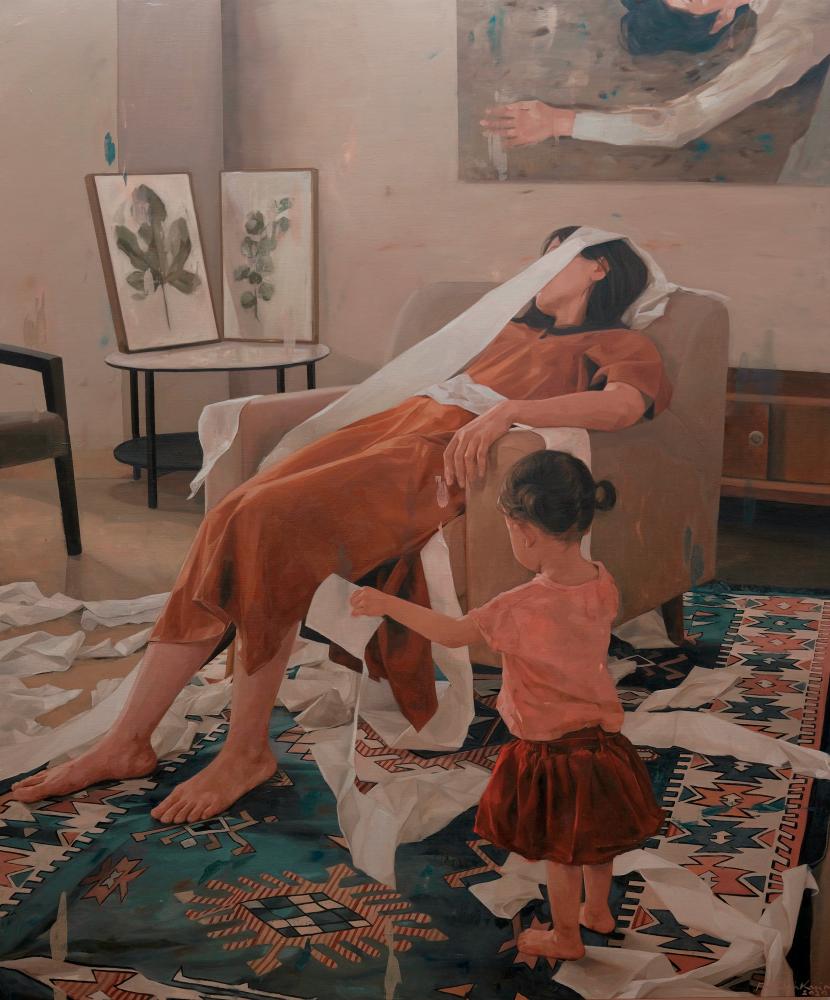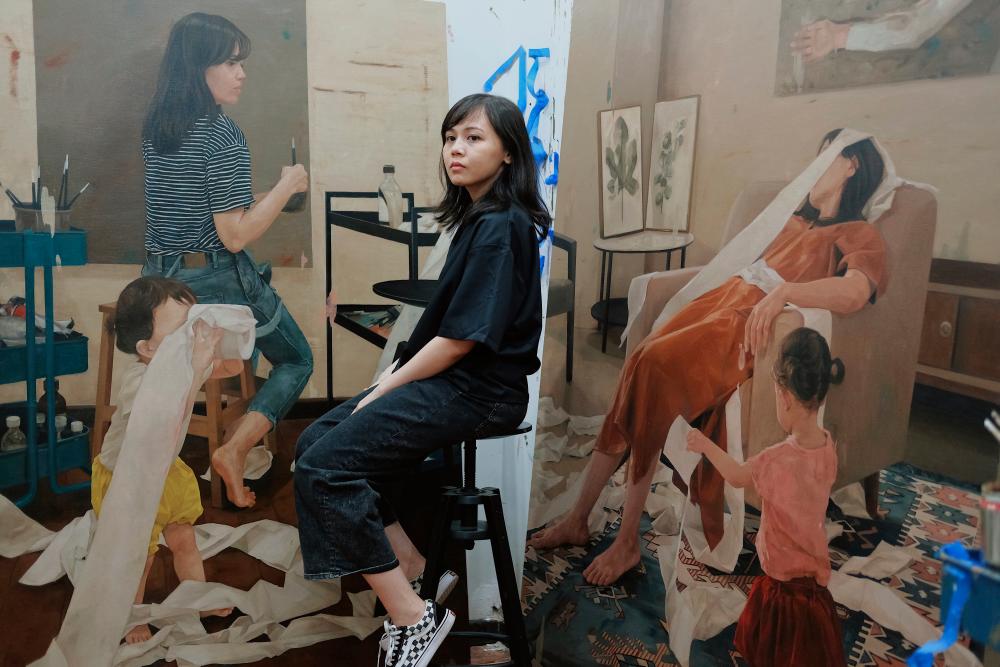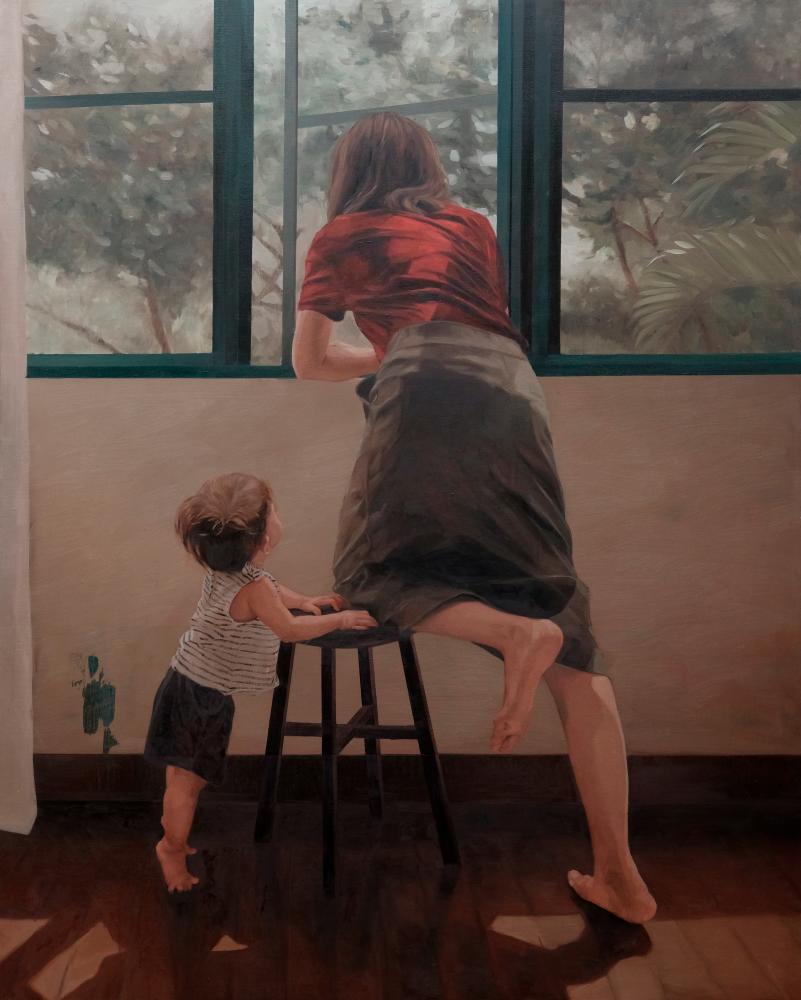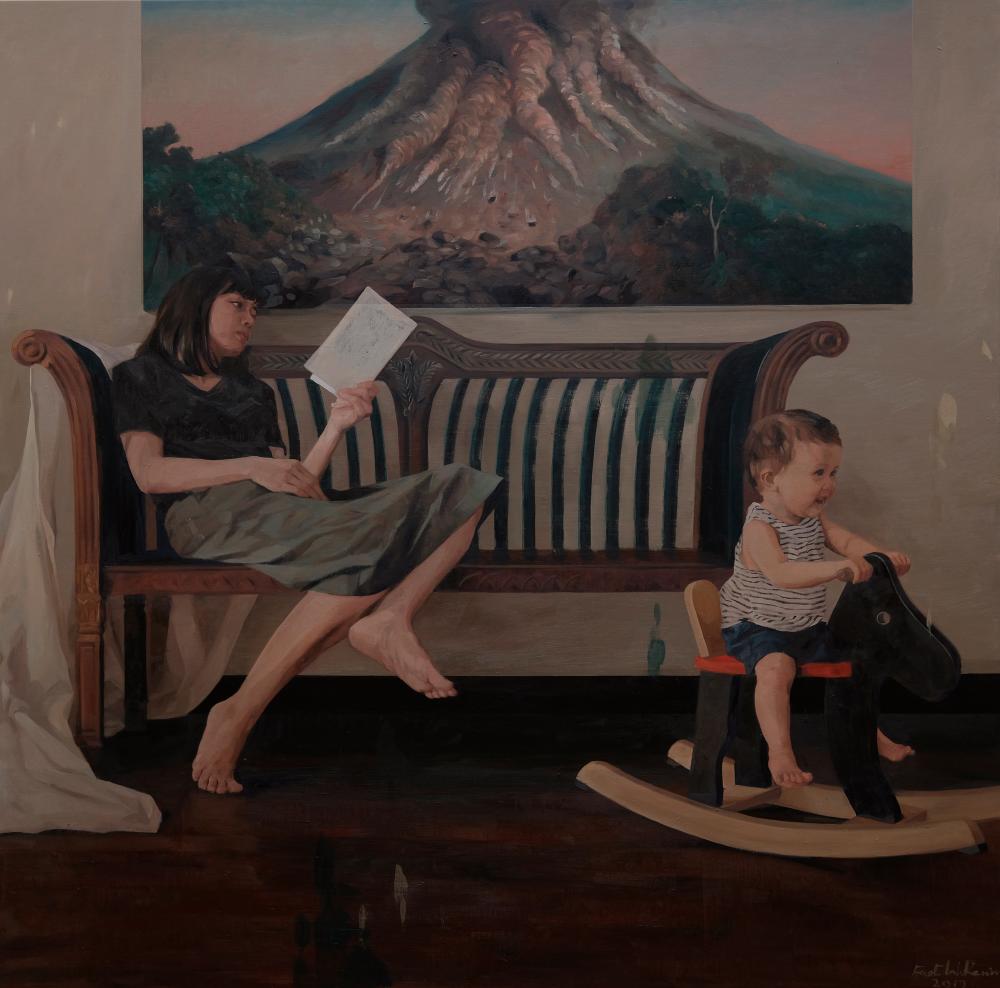FADILAH Karim is in love with life – the ordinary contemporary life that mirrors unostentatious brushstrokes of 19th-century realism rather than romanticised kaleidoscopic lenses.
Many of Fadilah’s paintings of herself as the main protagonist are often rendered in a pensive gaze, with insouciant gaiety full of longing yet shying away from making eye contact with the viewer.
Appropriately, her husband, daughter and pet cats, among others, have made appearances in the paintings, aptly frozen in time and as candid as it is portrayed with vehement affection.
She documents fragments of reality throughout phases of life driven by undulating emotions, experiences and memories in her autobiographical works, for there is nothing more real than what cannot be seen.
Fadilah has attempted to subvert everyday reality to some extent in her most recent works, neither exaggerating nor discrediting others but depicting the reality of motherhood and parenthood, reflecting her experience.
She painted a portrait of her pregnant self titled Bubblegum (2018), which saw changes to her physical body, with her legs bloated as she gasped for air, while Terrible Two (2020) saw her confronting the tantrums tongue-in-cheek as she embraced the joy of raising a two-year-old.
Surprisingly, the exact subversive expression was not explored during her formative years.
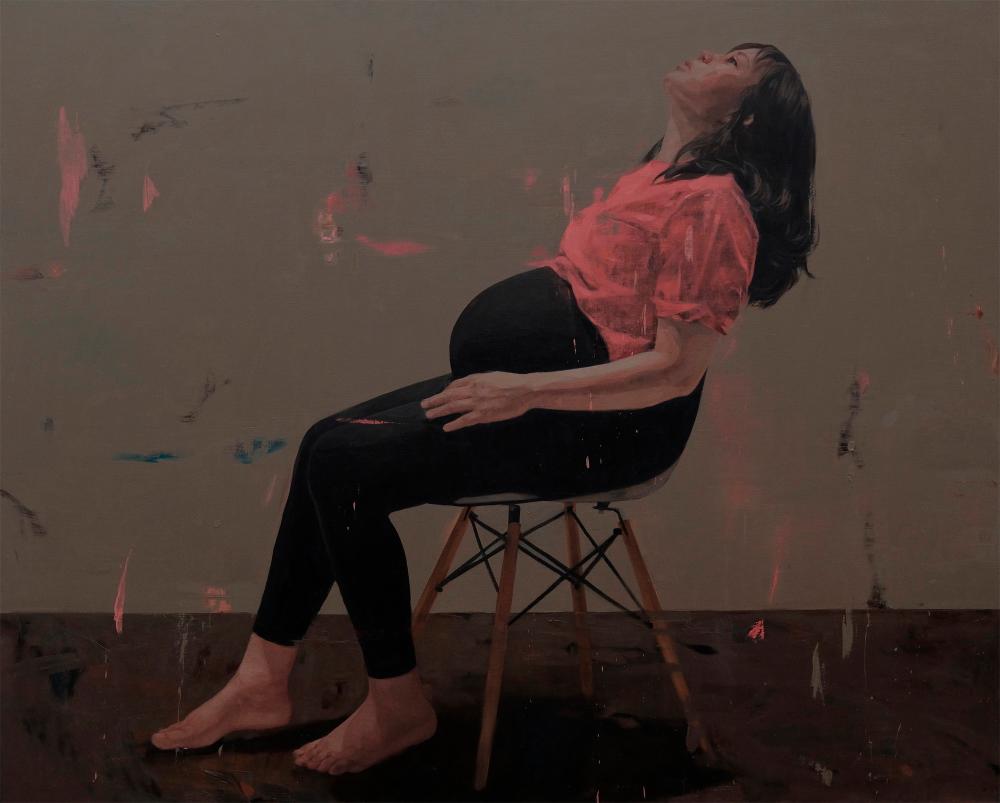
“There wasn’t any intention to subvert reality in my earlier works as they were manifestations of my memories and feelings at that moment of time. It was very instinctual.
“You will know if it is the right image to paint when it comes to the mind naturally,” she explains, adding that she only paints subjects that she cannot express with words.
“For instance, The Lonesome Painter (2015) evoked a sense of loneliness when I was all alone in my art studio one particular night.
“I felt alone. At the same time, I wanted to be left alone. The feeling was so complex and intricate that no words could describe it, but you could share the same sentiment through the figure’s body language.”
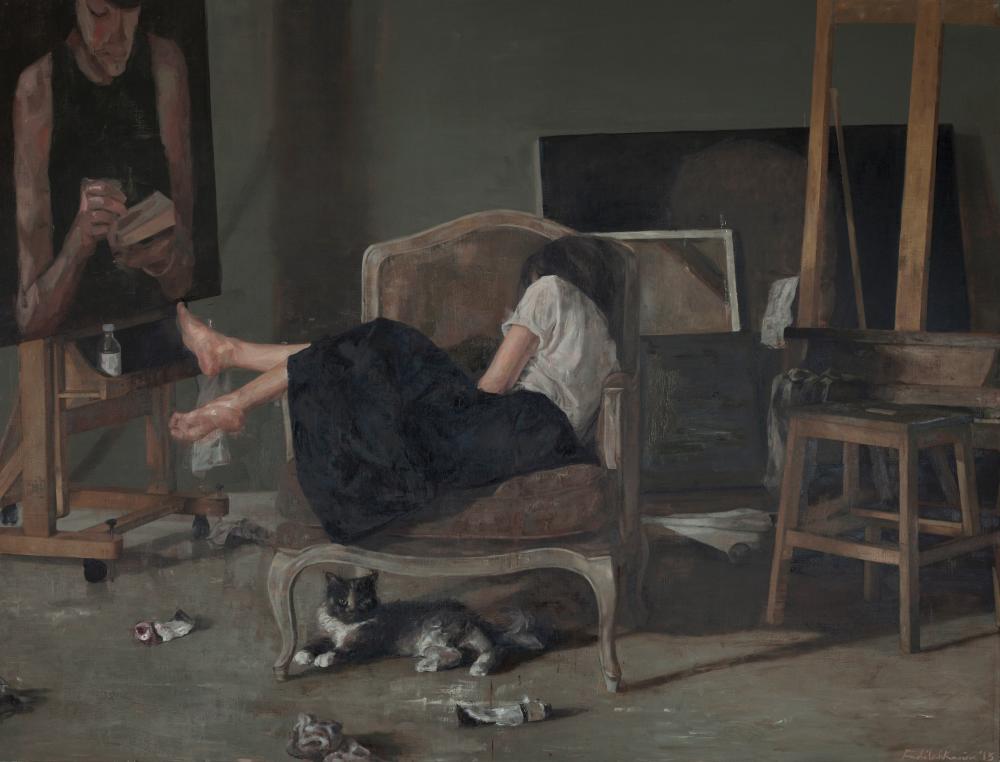
Last December, the 34-year-old artist commemorated 10 years of her practice in fine arts with a retrospective exhibition A DECADE: Fadilah Karim 2010-2020, featuring over 50 artworks, with more than 140 documented in the catalogue.
In retrospect, she had the opportunity to revisit and rediscover her older works, some of which were loaned from her collectors, others from her private collection, including artworks that had not been shown in Malaysia.
“I looked at them with relief as it reminded me of my old self. It was quite sentimental as every work has its own memories.
“It was as if I was reading a diary from 10 years back – from struggling to become a female artist among men, through a period of breakups, then marriage and now being a mother.
“Even my style of painting had changed within a decade. I can’t paint the same way all the time. When I look at my old works, I wonder how I painted that? And other times, I try to view my artworks as if I’m the audience and not the artist,” Fadilah shared.
By taking a step back to see from an alternative perspective, not as a creator but viewer, Fadilah gained plausible new interpretations that could in more ways than one help frame new contextuality. However, clear misinterpretation among viewers does happen more often than not.
Art is misunderstood because of the hackneyed saying: “I don’t get it”, which scrambles the rational circumstances between one viewer’s perception to the next, and the artist’s infallible pretext. But the truth is, you cannot achieve feelings that you cannot relate to.
As the 19th-century Austro-Bohemian composer Gustav Mahler once wrote in a letter to German music critic Max Kalbeck: “No music is worth anything if first you have to tell the listener what experience lies behind it.”
“Someone asked me about my early works during the exhibition, which comes from the overlapping series – Confused (2011), Second Thought (2011), Smokers #Azrin Mohd (2012) and Have You Seen My Scars (2012). He wondered if the overlapping images in those paintings suggested movements but my intention was rather different.
“The overlapping approach best described my train of thought at that moment, which was often in shambles – hesitating, always reaching and never settling.
“Instead of suggesting movement, I was portraying the uncertainty of my emotion. Hence, the layers of clarity, vagueness and the overlapping of the subject, all at the same time.
“There are also some who would read my work in an aesthetical manner, enjoying the beautiful side of the autobiographical narrative. Despite the changes in subject portrayal, people are still able to relate to my work.
“Comparatively, I received positive feedback in my early days of being an artist. But to me personally, I would say my works and ideas are not as polished as today. The fact being I was still searching for my own style at the time. Safe to say today, I may have found my identity but I shall never stop exploring and evolving.”
Fadilah’s meteoric rise in becoming one of the brightest luminaries in the local and regional art scene continues to challenge the perception of viewers, in a bid to look past the perpetual state of reverie and despair, in a tug of war.
